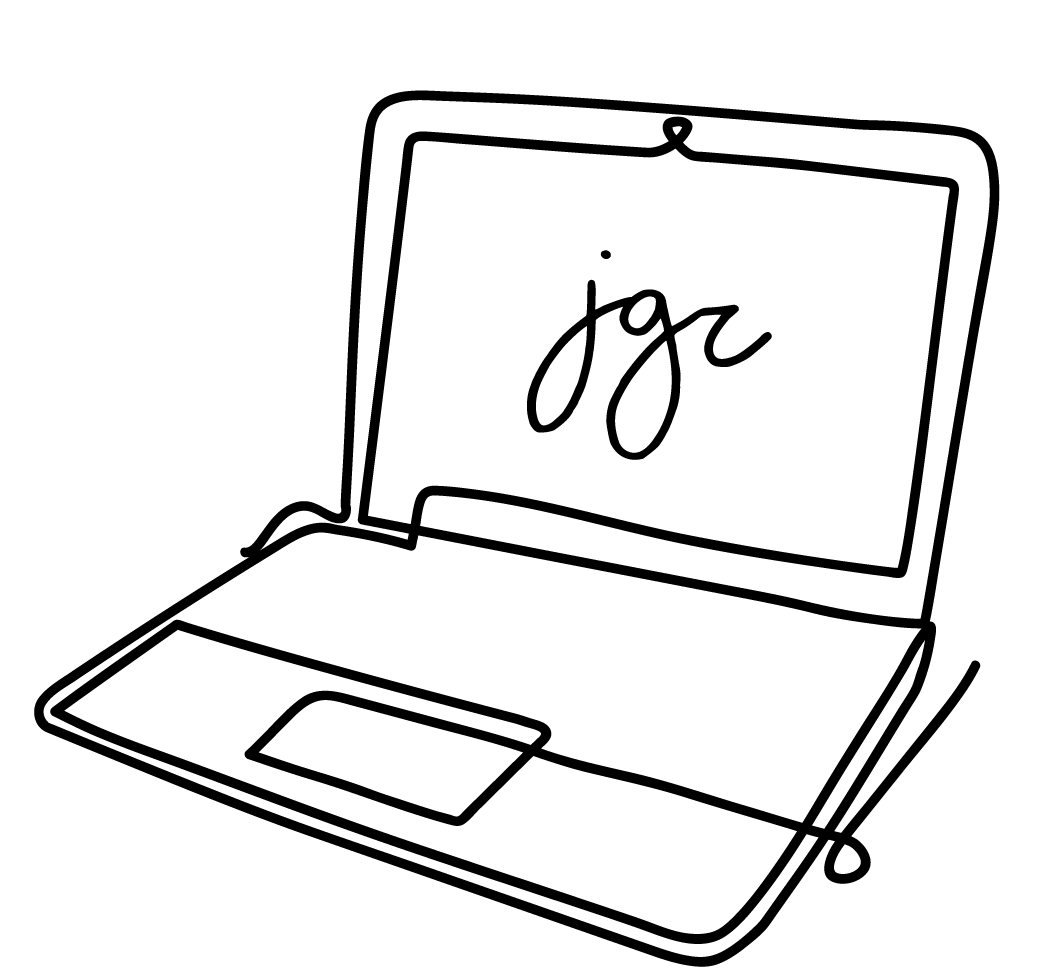iNFORMed
spring 2020
spring 2020
During my last quarter at UC San Diego, I participated in the course, DSGN 100: Prototyping. For about 7 weeks we had the opportunity to work within teams to build an interactive and informative mobile information system surrounding the current state of various communities due to COVID-19. I worked along-side Brianna Lui, Cora Xing, Julianne Chen, and Sam Baik for this project and I can honestly say that I loved our team dynamic so much.
This was an extensive 8 week project split in to equal parts for research and prototyping. This page is divided in the order of events with sections outlining our choices and steps. If you would like to see our final product, please go to the bottom of this page!
This was an extensive 8 week project split in to equal parts for research and prototyping. This page is divided in the order of events with sections outlining our choices and steps. If you would like to see our final product, please go to the bottom of this page!
User Research
Teams were created based off of research interests: Home Isolation, Community Resources, Safety/Sanitation, and Education/Work. I was placed into a team that wanted to focus on Community Resources. We had decided to explore the possibility of creating a resource to mitigate panic buying and to also provide an option to "fact check" social media posts and articles in order to provide the public with relief from "fake news" or misinformation. We noticed how people who were misinformed about the virus upon its initial outbreak in the United States led to mass panic buying movements as a "mob mentality" of sorts was created across the country.
Public Survey:
Our team released a survey targeting California residents who may have been impacted by COVID-19. The questionnaire was sent to some of our personal connections as well as shared to various social media sites such as: Facebook Groups, Twitter, Instagram Stories, and LinkedIn. Upon the end of this stage, we had received 121 responses to our questionnaire! The next task we tackled was analyzing each of these responses. Some key statistics we had pulled from this analysis were:
- Over 77.4% of our participants identified Facebook as a source of misinformation surrounding COVID-19
- Following Facebook, News/Media Sources such as CNN or Fox were also identified as a source of misinformation by 68.7% of participants.
- These two statistics are interesting because 88.2% of participants rely on News/Media sources for information while only 37% rely on Facebook for COVID-19 information.
- Over 50% of our pool have been worried about having reliable access to proper resources/groceries due to the impacts of the COVID-19 pandemic.
Our team released a survey targeting California residents who may have been impacted by COVID-19. The questionnaire was sent to some of our personal connections as well as shared to various social media sites such as: Facebook Groups, Twitter, Instagram Stories, and LinkedIn. Upon the end of this stage, we had received 121 responses to our questionnaire! The next task we tackled was analyzing each of these responses. Some key statistics we had pulled from this analysis were:
- Over 77.4% of our participants identified Facebook as a source of misinformation surrounding COVID-19
- Following Facebook, News/Media Sources such as CNN or Fox were also identified as a source of misinformation by 68.7% of participants.
- These two statistics are interesting because 88.2% of participants rely on News/Media sources for information while only 37% rely on Facebook for COVID-19 information.
- Over 50% of our pool have been worried about having reliable access to proper resources/groceries due to the impacts of the COVID-19 pandemic.
Interviews:
Interview participants were selected through our original survey where participants could express interest in meeting with us over Zoom. These interviews were no longer than thirty minutes, and each member of the team followed an interview guide in order to ensure that a similar experience is being provided for each volunteer. Some key insights gained through these interviews include:
- Participants wanted news about COVID that was pertinent to them and where they lived
Interview participants were selected through our original survey where participants could express interest in meeting with us over Zoom. These interviews were no longer than thirty minutes, and each member of the team followed an interview guide in order to ensure that a similar experience is being provided for each volunteer. Some key insights gained through these interviews include:
- Participants wanted news about COVID that was pertinent to them and where they lived
- Participants wanted their news to easily be digestible and not overwhelming
- Participants thought the stay-at-home mandate is necessary & it is worrying that some people think otherwise
Personas & Storyboards:
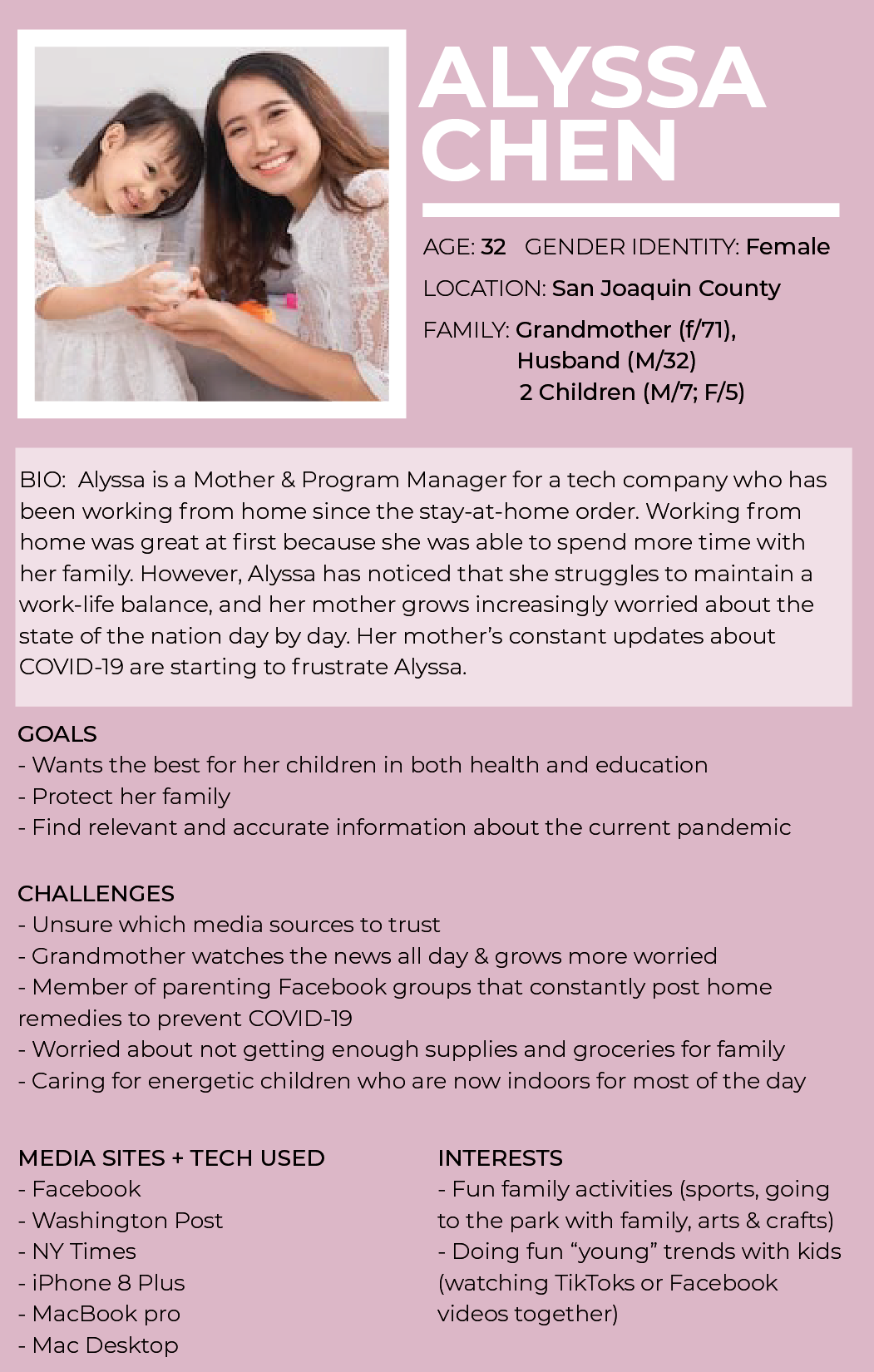
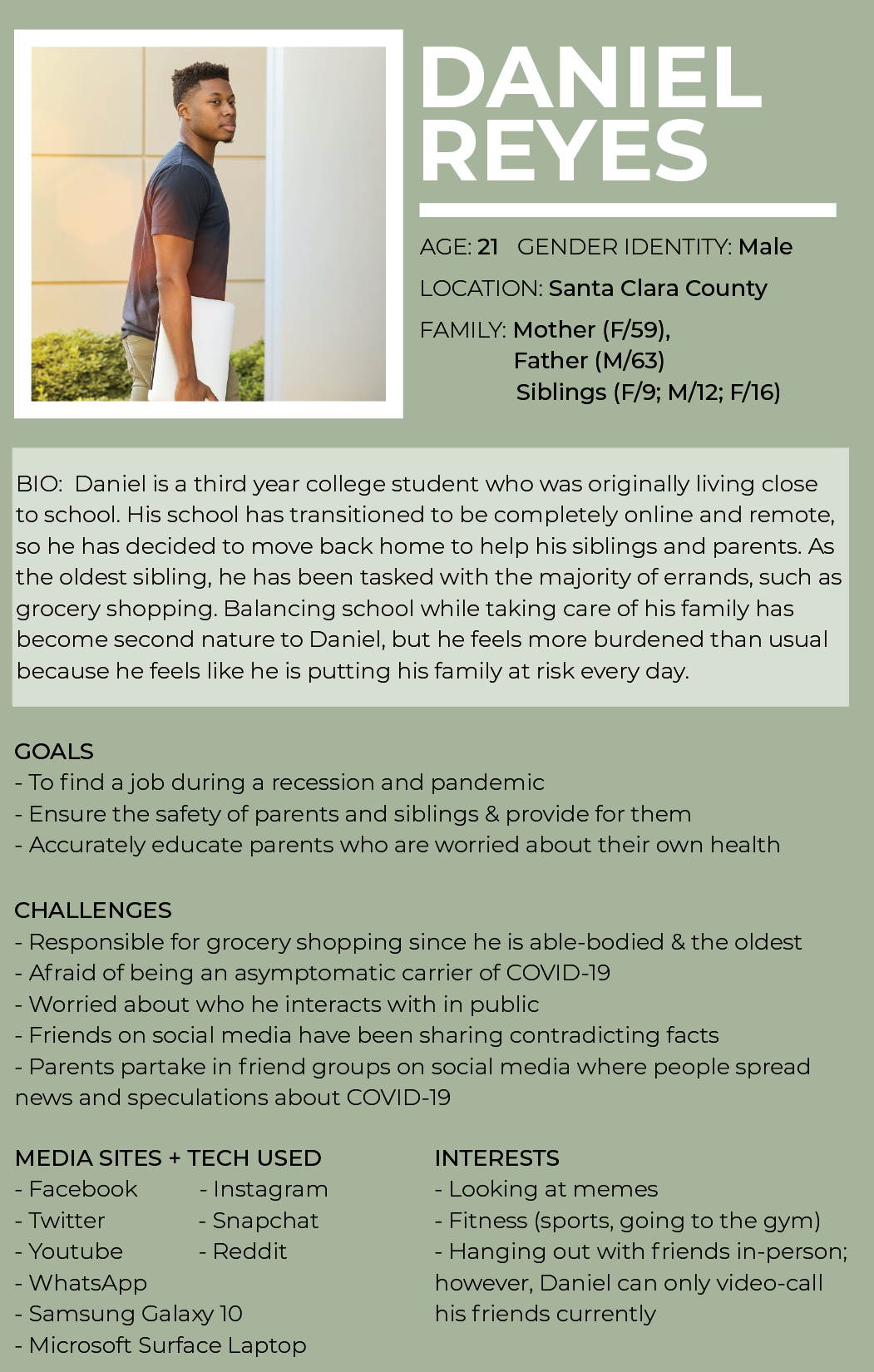



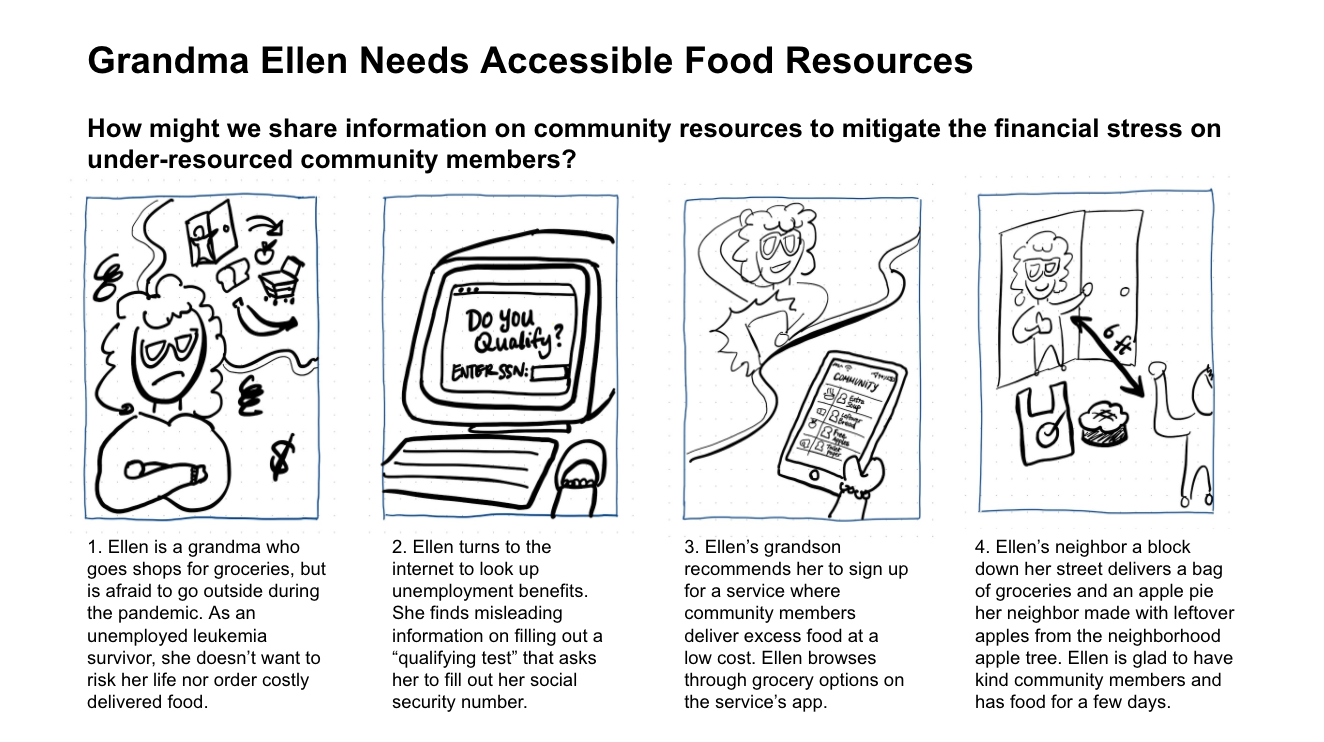

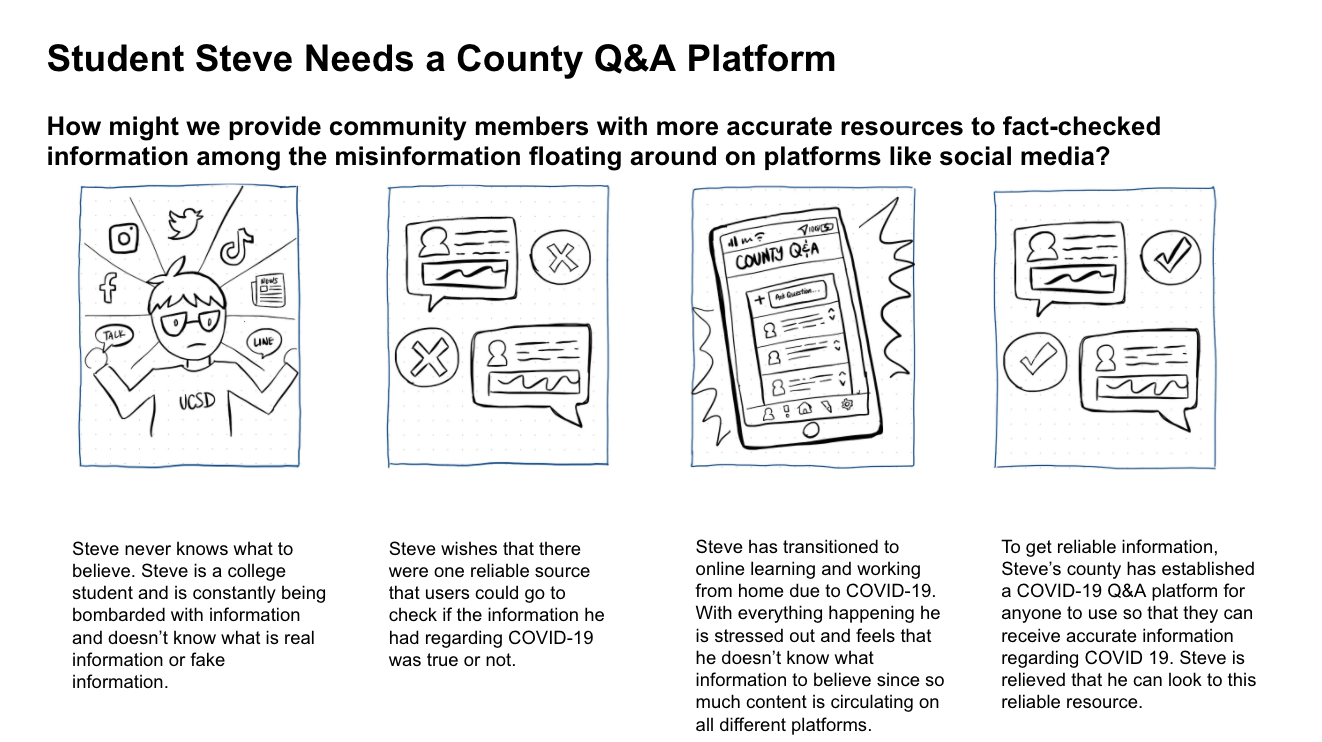
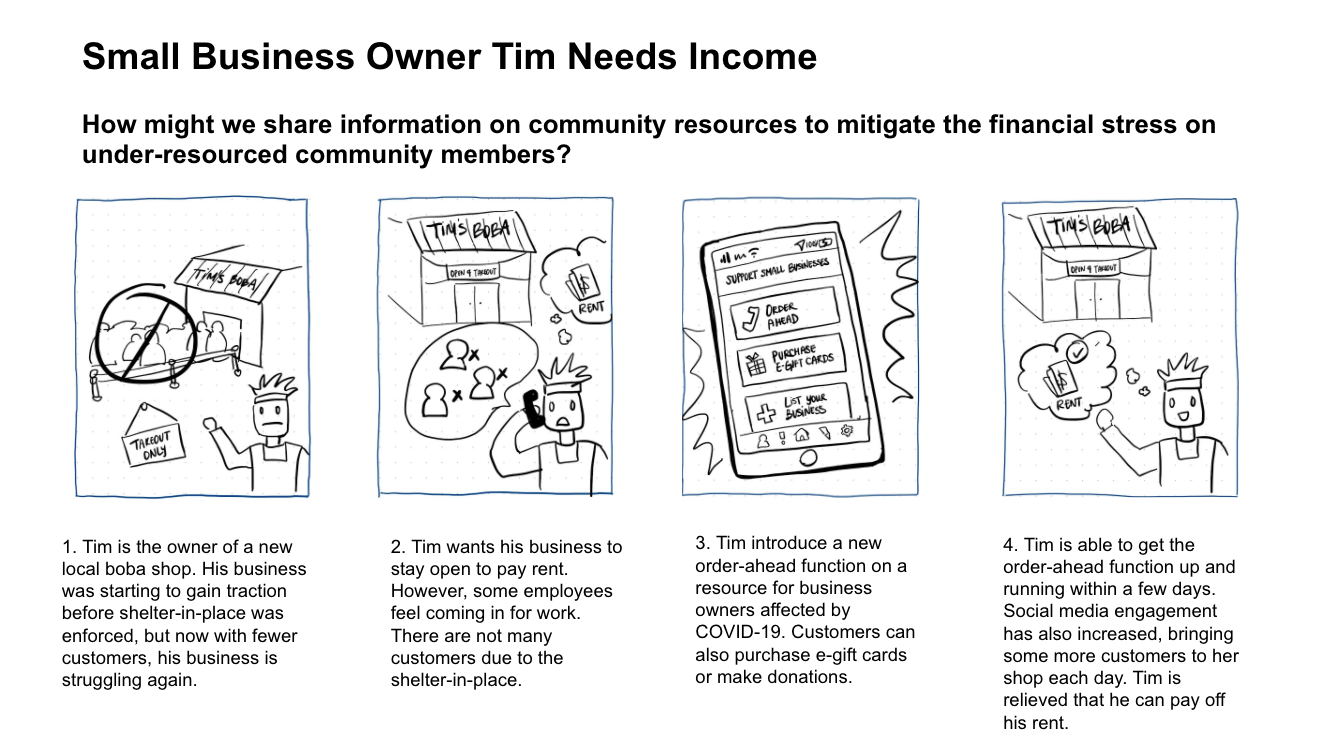
Final Research Presentation:
Prototyping
Sketches & Wireframes
Sketches & Wireframes
After four weeks of research, teams are able to move forward in to prototyping. The first step of our process included sketches and wireframes. Below is our collaborative Figma board where the team built wireframes for the various screens our app would have. Between the five of us, we were able to pull the best features of each of our sketches in order to produce these wireframes.
Low Fidelity Prototype
Below is a version of our low fidelity prototype utilized in our studio class in order to perform early testing.
Style Guide
I was especially excited for this part! For stages 5 and 6 of the prototyping phase, my team built a moodboard and a corresponding style guide in order to brand our app effectively. Our choice for the name "iNFORMed" came from our intention for the app to help people stay informed and educated to the most accurate ability in order to combat the societal consequences left by COVID-19. In a time of such uncertainty and stress, we wanted to build something that would help ease the minds of its users while simultaneously providing meaningful/reliable resources.
I was especially excited for this part! For stages 5 and 6 of the prototyping phase, my team built a moodboard and a corresponding style guide in order to brand our app effectively. Our choice for the name "iNFORMed" came from our intention for the app to help people stay informed and educated to the most accurate ability in order to combat the societal consequences left by COVID-19. In a time of such uncertainty and stress, we wanted to build something that would help ease the minds of its users while simultaneously providing meaningful/reliable resources.
Embedded below is our final prototype along with our final presentation. My team consistently received high marks on our deliverables, and I finished out the course with an A.
